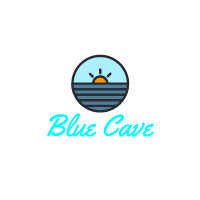The Blue Cave holds a great cultural significance in the region. It is a symbol of natural beauty and is deeply entwined in local folklore and traditions. It’s not only a tourist attraction but also a part of local identity and heritage.
How is the Blue Cave celebrated in local culture?
The Blue Cave is often a centerpiece of local celebrations and events, including festivals, races, and other cultural activities. These events often pay homage to the cave’s beauty and the mystery surrounding its unique blue light.
Are there any artistic representations of the Blue Cave?
Yes, the Blue Cave has been the inspiration for numerous works of art, including paintings, literature, photography, and music. These artistic interpretations highlight the cave’s beauty and its significance in the cultural identity of the region.
Has the Blue Cave been featured media?
Yes, the Blue Cave has been featured in various local and international media outlets due to its stunning natural beauty. It’s often highlighted in travel and nature documentaries, and has been covered by numerous travel bloggers and influencers.
Island Hvar Croatia has it all
Are there any cultural restrictions or customs to be aware at the Blue Cave?
Visitors are asked to respect the cave’s natural environment and local customs. This includes not leaving any waste, not disturbing the wildlife, and adhering to any guidelines or restrictions provided by tour operators or local authorities.
How do locals perceive the Blue Cave?
For locals, the Blue Cave is a source of pride and a part of their cultural and natural heritage. It’s a symbol of the region’s beauty and the preservation of this site is of utmost importance to them.
Has the Blue Cave been used in any cultural ceremonies or rituals?
While there are no ongoing rituals or ceremonies held in the Blue Cave due to its protection as a natural site, the cave and its surroundings might have historical significance linked to cultural ceremonies or rituals.
Is the Blue Cave considered a sacred site?
While the Blue Cave isn’t officially recognized as a sacred site, it holds a special place in the hearts of locals and many visitors, who are often awe-struck by its unique beauty and the sense of tranquility it offers.
Are there any local traditions related to the sea and the Blue Cave?
Yes, being a coastal region, many local traditions revolve around the sea, including some related to the Blue Cave. These may include festivals, boat races, and fishing rituals.
How is the Blue Cave featured in local education?
The Blue Cave is often included in local education as an example of unique geology and natural beauty. It’s also used to educate about environmental conservation and tourism.
Are there any songs or music inspired by the Blue Cave?
Yes, there have been several songs and pieces of music inspired by the Blue Cave, often capturing its serene beauty and the mystery surrounding its blue glow.
How can I learn more about the Blue Cave’s cultural significance?
Local museums, visitor centers, and guided tours can provide more information about the cultural significance of the Blue Cave. Books and online resources can also be helpful.
Are there any initiatives to preserve the cultural significance of the Blue Cave?
Yes, there are initiatives to preserve the Blue Cave, often focusing on balancing tourism with conservation to ensure the cave’s cultural and natural significance is maintained for future generations.
Are there any annual events that involve the Blue Cave?
Yes, there are a few annual events, including festivals and races, that involve the Blue Cave. These events often highlight the cultural significance of the cave to the local community.
Has the Blue Cave ever been closed for cultural reasons?
There are no records of the Blue Cave being closed specifically for cultural reasons. However, it may occasionally be closed for conservation efforts or due to weather conditions.
Are there any local foods or dishes associated with the Blue Cave?
While there are no specific foods associated with the Blue Cave, the local cuisine often features seafood and dishes that are representative of the region’s coastal culture.
